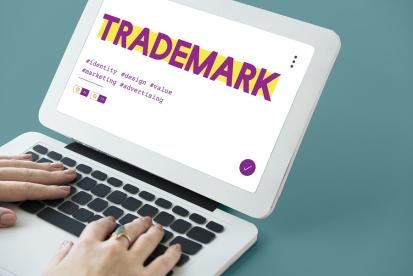A year has passed since the United States Patent and Trademark Office (“USPTO”) implemented its Post-Registration Proof of Use Audit Program (“Use Audit Program”). The Use Audit Program empowers the USPTO to require a trademark registrant to submit additional documentary evidence to establish use of a registered mark in connection with every good or service claimed in the registration. However, the impact of the Use Audit Program on trademark owners is just now becoming apparent.
Background
Traditionally, the USPTO requires the submission of just one specimen per class showing use of a good or service in connection with a registered mark at the time a registrant files a declaration of use, even in cases where the registration claims use of the mark for multiple goods or services in the class. As a result, some registrations retain goods or services, even though the registered mark is not being used for those goods or services, because registrants do not delete those goods or services that are no longer in use. The USPTO refers to such registrations as “dead wood.[1]”
In 2012, the USPTO announced the Post-Registration Proof-of-Use Pilot Program (“Pilot Program”) to address the issue of dead wood. Throughout the Pilot Program, the USPTO audited 500 registrations for which a declaration was filed. As part of its audit, the USPTO required registrants to produce additional evidence of use for at least two additional goods or services per class. At the close of the Pilot Program, the USPTO determined that 51 percent of registrants subject to the audit could not substantiate use for some covered goods or services. Further, of this 51 percent, 35 percent of the registrants requested some portion of the goods or services be deleted from their registration at the time of the audit response.
These results strengthened the USPTO’s efforts to clear the dead wood from the Trademark Register, and ushered in a departure from the USPTO’s typical practice of requiring trademark owners’ submission of a specimen of use for only one good or service per class when filing a declaration of use.
The USPTO’s Use Audit Program
In November 2017, the USPTO instituted the permanent Use Audit Program as a means to “promote the accuracy and integrity of the trademark register.[2]” Now, all registrants who file a declaration of use for a registration that includes either (1) at least one class with four or more claimed goods or services[3] or (2) at least two classes with two or more goods or services in at least two classes[4] may be subject to an audit. If selected, registrants will receive a Post-Registration Office Action stating their registrations were selected for audit, and requesting proof of use for two additional goods or services per each class. Selected registrants will have up to six months to provide the requested proof of use,[5] or to delete the audited goods or services.[6] Failure to respond to the Office Action will result in the cancellation of the registration in its entirety.
Looking Forward
The USPTO anticipates that, on an annual basis, it will audit up to 10 percent of the declarations of use filed in support of registrations. This projection is significant, and poised to impact trademark owners’ portfolios. Indeed, registrants are already receiving these office actions advising that their registrations were selected for audit. The audits require brand owners to provide additional evidence of use, often at significant effort and expense.
Accordingly, we recommend that registrants carefully review the entire identification of goods and/or recitation of services, and proactively delete the goods or services that are not in use at the time of the filing of the declaration of use. Registrants should be prepared to submit documentary evidence in support of all goods and services covered by the registration.
Registrants should also carefully remove from the registration goods or services that may be duplicative. The benefit of removing duplicative items is two-fold: (1) it decreases the risk of an audit in the first place, and (2) in the event of an audit, it decreases the number of goods or services for which additional evidence will be required.[7]
The Use Audit Program is still in its relative infancy, but its impact on brand owners’ portfolios may be profound. As the USPTO continues its quest to cull the dead wood, registrants may do well to protect their portfolios with internal audits directed to use. In doing so, trademark owners may better ensure their marks do not become the USPTO's kindling.
[1] Dead wood registrations are especially problematic because Examining Attorneys must cite dead wood registrations against later-filed trademark applications; and, thus require applicants to respond to Office Actions, abandon their applications, or seek cancellations of cited dead wood registrations.
[2] See “Post Registration Proof of Use Audit Program,” Trademarks: Maintaining a Trademark Registration, USPTO.gov, https://www.uspto.gov/trademarks-maintaining-trademark-registration/post-registration-audit-program; 37 C.F.R. §§ 2.161(h), 7.37(h).
[3] For example, a registration claiming at least one class with four or more goods or services would look as follows: “purses, wallets, backpacks, suitcases, luggage tags” in International Class 18. See “Post Registration Proof of Use Audit Program,” Trademarks: Maintaining a Trademark Registration, USPTO.gov, https://www.uspto.gov/trademarks-maintaining-trademark-registration/post-registration-audit-program.
[4] For example, a registration claiming at least two classes with two or more goods or services in at least two classes would look as follows:
|
|
"purses, wallets" in International Class 18; |
|
|
|
"clothing, namely, dresses, shirts, pants, coats, hats" in International Class 25; and |
|
|
|
"retail clothing stores" in International Class 35. |
|
See “Post Registration Proof of Use Audit Program,” Trademarks: Maintaining a Trademark Registration, USPTO.gov, https://www.uspto.gov/trademarks-maintaining-trademark-registration/post-registration-audit-program.
[5] For audited goods, the USPTO’s standard for “proof of use” is stricter than the criteria for a specimen. To show use of a good, the registrant must provide evidence of how the mark is used in commerce with the audited goods. Submission of, for example, packaging showing the mark, but not the audited goods, is not acceptable. For services, however, the “proof of use” is the same as the typical specimen submission for services.
[6] Should a registrant seek to delete the audited goods or services, a registrant should submit proof of use for all other goods or services that were not audited in order to avoid a second Post-Registration Office Action. If a registrant cannot provide proof of use of non-audited goods or services, best practice is to also delete such goods or services from the registration at the time of response.
[7] As discussed above, the USPTO is targeting registrations with numerous goods or services. The removal of duplicative goods or services from a registration’s identification may assist in avoiding a Post-Registration Office Action auditing a registered mark.





 i
i


